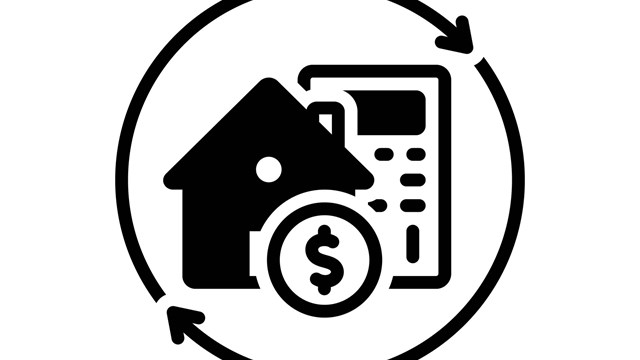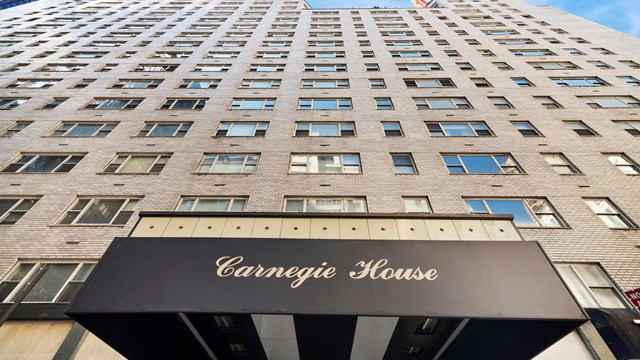For many people, appraisals – why they're done, how they’re done, and how they’re used – is a mystery. But that need not be the case! For all intents and purposes, appraisals are a straightforward and simple component in the process of completing financial transactions.
As it relates to real estate in general – and co-ops and condos specifically – appraisal is defined as an estimate of value, as for sale, assessment, and taxation. Appraisals are required for all types of financing, including individual co-op and condo loans, underlying permanent mortgages on cooperative apartment buildings, and even partial interest property rights, such as shared common areas in condominium properties.
Real estate appraisal is as much a science as it is an art. It employs established techniques and methods to arrive at consistent and reliable valuations. Ken Chitester, Director of Communications for the Appraisal Institute, a national umbrella organization for the appraisal industry based in Chicago, says: “Appraisal methodologies and techniques are consistent across the country. Each market is unique, but the methodology of appraisal stays the same and applies across the board.”
What sets appraising apart from other sectors of the real estate transaction process, says Jonathan Miller, President/CEO at Miller Samuel, a national appraisal firm based in New York City, is that: “In a real estate transaction, everyone has some sort of connection to the transaction except the appraiser. The brokers don’t get paid if the transaction doesn’t close, but whether the transaction closes or not, the appraiser gets paid. We are outside, neutral experts. There’s no skin in the game. Therefore, there’s a different perspective.” That generally keeps everything honest.
The Three Approaches to Value
Appraisal methodology rests on three approaches to determining value for any given piece of property. They are the cost approach; the comparable sales or market approach; and the income approach.
The cost approach is perhaps the easiest (and frankly least used) method. In this model, value is determined by estimating the reproduction cost of a property – in other words, accounting for every physical aspect of a property, including bricks, mortar, concrete, glass, tile, etc., adjusting those costs for age and obsolescence, and adding back the value of the land on which the property sits to determine what the property would be worth today. This approach is rarely used, except for insurable values, to which we will return later.
The comparable sales or market approach to value looks at the sales of other, similar properties, and based on comparisons between the property to be appraised – known as the subject – and the other properties, known as comparables. They are compared, and based on their differences an appropriate value is derived. This approach is most commonly used with individual homes, co-ops, and condos. So, for example, if we are trying to appraise a two-bedroom condo or co-op apartment in a prewar elevator apartment building on the Upper West Side of Manhattan, we would look at recent sales of other two-bedroom apartments on the Upper West Side and compare their attributes, things such as square footage, views, finishes, age of appliances, etc., making adjustments up or down and arriving ultimately at a value for the subject.
The income approach is employed primarily for income producing properties, such as rental apartment buildings or shopping centers. The theory behind this approach to determining value is that a property can command a specific amount in rent and has specific expenses. The expenses are deducted from the income and the resulting net income, which accrues to the owner, is then ‘capitalized’ by an appropriate rate to determine the value to an investor. The ‘capitalization rate’ is a reflection of what return an investor requires to make an investment with a specific income stream and ‘bottom line.’ In other words, an investor might require a 10 percent return to assume the risk to his or her investment in say, a small apartment building. If the net income from the property is $100,000, the value of the property would be $1,000,000. Income approach appraisals are generally required for acquisition and refinance of mortgages, including underlying permanent mortgages in co-op buildings.
Appraisal in the Co-op and Condo World
The most typical reason for an appraisal of a co-op building is the refinancing of the property’s underlying permanent mortgage. Unlike home loans or individual co-op unit mortgages, underlying permanent mortgages are not generally self-liquidating loans of 20 or 25 years. These loans generally carry terms of five or 10 years and require refinancing at that same interim.
The question is, how would a co-op building be valued? Like single-family homes, each individual unit has a value. So would the value of the property be the aggregate of the value of all the units? Terence Tener, a founding principal at KTR Real Estate Advisors, a nationwide appraisal and real estate advisory firm with offices in New York, suggests that “the building is worth the sum of the value of each of the individual shares that make up the corporation that owns the property. The value of those shares is not born out of what you might rent it for, but rather what you would pay for a residence you would live in.” In simpler terms, the aggregate value of the units.
Miller disagrees. “Usually, an aggregation of value of apartments is worth more than the value of the property as a rental.” This is the significant factor in the valuation of a co-op building for refinancing.
Tener explains that, “For underwriting purposes, banks can look at the potential that the co-op might fail, and they might take the property in a foreclosure, and ask the appraiser to consider a hypothetical situation that the property would be operated as a rental.” This hypothetical value, the co-op’s value as a rental property, is the basis upon which most lenders will underwrite their loan. “The true value,” maintains Tener, “is the value of the sum of the shares.”
Individual Unit Valuation
“While the key to appraising is that appraisers consider all three approaches to value,” says Miller, “in a multifamily co-op or condo building the cost approach can’t be done, because you’d have to extract the cost of the unit from the entire project. It’s just not practical. You consider all three, but really only two, and of those two, one is 90 percent of the consideration, the sales approach, and the other 10 percent is the income approach. The challenge of the income approach in co-ops is that there are so many restrictions on permitting sublets, that the market in general is not economically driven by investors.”
Employing the market sales or comparable approach as the primary determination of value for individual units depends on reliable comparable information. “The first preference,” continues Miller, “is to look at sales activity in the same building, particularly the same line. You tend to favor units in the same building because they’re influenced by the same common areas, underlying financing, proportional maintenance and amenities that define the property. The second category for consideration would be sales from nearby buildings that have similar attributes; building type, amenities etc. After that, you can consider anything.”
“The appraisal process,” Miller explains, “is that the less adjustments the appraiser has to make between the subject and to the comparable the better, the more reliable is the comparable. This becomes immediately apparent when you’re using, for instance, the apartment on the floor above or below in the same line.”
Other Types and Uses of Appraisals
Appraisal and appraisal techniques are used for several other purposes in the co-op and condo world. The one that comes most readily to mind is insurable value. Insurable value is most often requested by either an insurance company relative to the replacement value of the property in the event of a total loss—think earthquake—or by a bank during a refinance of an underlying permanent mortgage for the purpose of determining how much insurance they want the co-op to carry relative to the new mortgage. Insurable value is based on the cost approach and often has very little relation to the real value of the property, as it’s based on the replacement cost of building materials and techniques that may no longer be used or are obsolete. Consider the case of a prewar apartment building with marble hallways and hand cut parquet floors. Those finishes could not be replaced today.
Another activity that employs appraisal techniques is assessment for tax purposes. Assessors are basically appraising your property. “Assessed valuation,” says Tener, “is born of mass appraising, not specific appraisal. There are not enough assessors to appraise every building in New York City – or any municipality for that matter – so the assessor says 'Okay, all the property in a specific neighborhood is worth at least $300 per square foot,' and so on.” It rarely has a direct relation to the real value of property.
Miller says they often get calls for assignments of all kinds of unique property rights. “We do appraisals of community space, hallways, basement space, and all kinds of things. They’re not traditional appraisals and require special techniques.”
Perhaps in the final analysis, Miller suggests, there is an important concept that co-op and condo owners, or any property owner should keep in mind when having an appraisal. “The appraiser is working for the bank,” or whoever has engaged them, “not the consumer. It’s not about who pays the fee, it’s about who engages the appraiser.” That arm’s length transaction protects everyone.
A J Sidransky is a staff writer/reporter for The Cooperator, and a published novelist.







Leave a Comment